Putting – Different grip techniques
Over the past 10 years, we have seen more tour and amateur players adopt new ways to hold the putter. In this week’s blog, I am going to talk you through each method and how you go about choosing the right one for you.
Key putting fundamentals
Before we dive into different types of grips techniques, they are some important putting fundamentals we must consider. The less wrist deviations we can use in the putting stroke, the more likely we are to produce consistent strokes and results. Our wrists can move in three dimensions, each with minimal effort. This therefore means a tiny change in one of these wrist angles = big change in club movement. This is why you often hear people talk about “rocking your shoulders”, it takes emphasis away from the wrists.
Grip Techniques
NOTE – ALL OF THESE GRIPS ARE EXPLAINED FOR A RIGHT-HANDED GOLFER, IF YOU ARE A LEFTY (welcome to the club!) THEN SWAP THESE INSTRUCTIONS AROUND!
I have also included tour professionals who use/used these methods so you can look at how their strokes on our go-to video platform…Youtube.
Reverse overlap (Tiger Woods, Jason Day – statistically on the best putters in the last two PGA Tour seasons)
With the right hand below the left, wrap your index finger of your left hand over the back of your right hand. This is common amongst many golfers due to its similarities with the full swing grip. However, in the full swing we prefer a grip which has a little more feel through the fingers, instead of the palms as seen here.
There are also variations of this grip which mainly involve using more than one finger to overlap. This mainly helps with getting the palms closer to the grip.
One of the main disadvantages of this grip is it can often lead the lead shoulder to drop and align to the left. This leads us onto our next grip technique…
Cross-handed (Jordan Spieth – circa 2015 when JS looked like he could not miss from 20 feet!)
Like the name suggests, this method involves switching the hand positions to left hand below right. Once again there are variations with this grip which include using the same overlap of the right index finger or no overlapping of the finger. This method tends to level the lead shoulder up and align easier to the target. If you are a right-hand dominant golfer, this also stops your dominant hand from ‘flicking’ and taking over the swing.
Alignment of shoulders to the target can often help neutralise club path and face.
Pencil and Saw (Justin Rose, Sergio Garcia)
One of the newer methods of holding the putter is the pencil and saw. I have grouped them together due their similarities. Both methods use the left hand to grip the top of the putter and the right hand as more of a guide. With the pencil, your right thumb should go under and round the back of the grip whilst your index and middle finger sit on the right edge of the grip. With the saw, your thumb does the same, however all your fingers go across the front of the grip, making your elbow point away from the target.
This is very good for right hand dominant players as like the cross-handed method, it takes the pressure and movement variance away from the right hand. The pencil and saw are two highly recommended grip methods for golfers who struggle with the yips in their putting (Gordon Morrison, PhD researcher in the Yips).
These methods are often well received over shorter distance putts, where the length of stroke tends to be small. However, with longer putts on slow greens, it is often difficult to grasp distance control.
Prayer (Russel Knox, Myself!)
The palms of both hands face each other and are directly in line with each other with the thumbs being placed on top of the grip. Variations of this grip include index fingers down the sides of the grip and overlapping or interlocking of the fingers on the back of the grip. Finally, say a pray and hope it goes in!
Because the hands are close to symmetrical and level, this should create level shoulders and encourage a neutral path of the putter head.
I switched to this method with the fingers down the edge of the putter as I feel this is the easiest way for me to grip the putter with my palms and not my fingers. This helps me control the putter without much wrist movement.
“So how do I know which one to use?”
- Use the grip you feel and through testing is proven to be the best over short, medium and long putts
- Testing on greens which have are of similar speed to ones you play on the most
Other considerations
- Holding the putter is INDIVIDUAL TO YOU… just because it works for your playing partners or someone you see on TV, does not mean it works for you
- Gripping the putter in the palm of your hands is commonly deemed more reliable and consistent than with the fingers. Therefore, when testing these various gripping methods, make sure when possible to use the palm of your hands.
- Each grip may feel more or less comfortable with different types of grips installed on your putter, as well as with different head types. For example, a traditional ping tour grip which has a small diameter, may be difficult to hold using the claw method. This method is often suited to a flat edged grip such as the Superstroke Claw.
We have an excellent variety of grip and putter options here at Peter Field Golf, all of which can be recommended during a Putter Fitting.
Let us know your different grip methods and how it helps you putt!
Lewis
@LClarkePCoach









